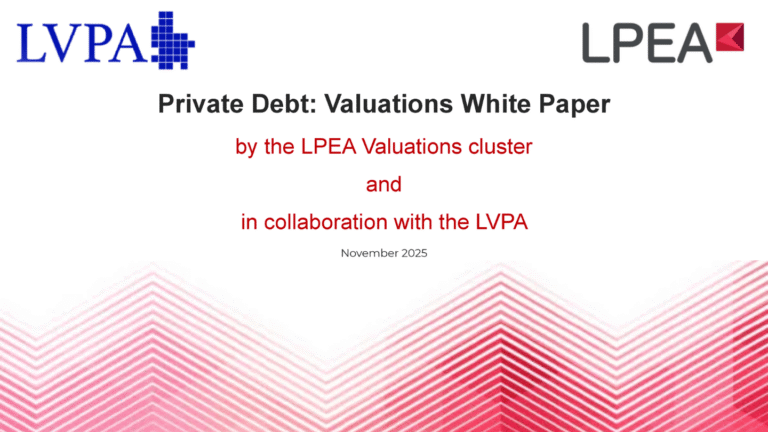Article by Vincent Remy, Partner, Private Debt Leader at EY Luxembourg, and Nick Smith, Managing Director, Private Credit, at the Alternative Credit Council, as published in Insight/Out magazine #33
Private Credit has solidified its role as a vital pillar of global finance, demonstrating remarkable resilience and adaptability amid economic turbulence. From supporting diverse borrowers to delivering steady returns for investors, the sector continues to thrive even in the face of inflation, geopolitical tensions, and post-pandemic recovery challenges.
The tenth edition of the Financing the Economy report, a collaboration between the Alternative Credit Council (ACC), the Private Credit affiliate of the Alternative Investment Management Association, and EY Luxembourg, offers a comprehensive exploration of Private Credit’s transformative journey. With assets under management now surpassing $3 trillion globally, the report highlights how the industry has navigated and evolved through unprecedented economic challenges.
Growth and resilience of Private Credit
The resilience of Private Credit is underscored by its consistent expansion, even during periods of significant economic disruption. The research shows that Private Credit funds deployed US$ 333.4 billion in new capital in 2023, a substantial increase from US$ 203 billion in 2022. This level of growth might feel surprising, given that we endured a pandemic and a period of high inflation, but assets and deployment volumes continue to grow steadily. This hints at an industry resilience which is most likely structural – and permanent – rather than short-lived.
One of the main indicators of this growth not being a passing trend is that banks continue to retrench. Europe is no different to the United States in that respect, although the market is not as mature. Alternative lenders continue to fill the void left by financial institutions and provide much-needed financing to the real economy. This is probably why we notice much of the growth has been driven by larger firms, accounting for about 80% of capital deployment.
The Private Credit market – or maybe it’s more appropriate to say markets (plural) – is strewn across different strategies. Corporate lending remains the backbone of Private Credit, representing 58% of assets under management among surveyed firms. Yet, we now have about 40% – a significant chunk by any measure – of strategies in asset-backed lending, real estate debt and infrastructure debt, pointing towards a strong demand amongst investors for Private Credit assets that can provide diversification and alternative sources of returns.
European market and emerging opportunities
We now estimate that Europe accounts for roughly 30% of the Private Credit market. Growing from a very small, nascent market only 10 years ago to become nearly one-third of the sector globally is a significant evolution. The main pillars for development of the market in Europe that supported this growth are still around today. One of these pillars is continued political support towards the Capital Markets Union initiative which seeks to create alternative sources of lending for SMEs. This combined with the recent amendments to the EU Directives or Regulations such as the AIFMD 2.0, which now provides that AIFMs can manage loan-originating funds on a cross-border basis, or ELTIF 2.0, which removes barriers to retail investor access, have helped open up the EU market. This will be particularly impactful for less developed Private Credit markets in Europe, enabling broader access to capital and fostering growth in underserved sectors.
Drivers of future growth
One of the key drivers of future growth is the increasing demand for private investment in infrastructure. Across the continent, many economies recognize the need to revitalize their utilities. They are also exploring future technologies, such as AI, and considering the finance needed to develop data centers. Furthermore, Private Credit is set to play a vital role in financing the global transition to green energy, with estimates suggesting that between US$ 100 trillion and US$ 300 trillion will be necessary by 2050. Most European states are currently facing challenging fiscal situations, leaving limited options for reducing spending or increasing taxes. Therefore, partnerships with private capital will be essential for achieving objectives related to infrastructure and energy.
Investor interest and sectoral diversification
The search for yield continues to attract institutional and sophisticated investors. By and large, fund structures remain typically closed-end with fixed maturities. But, there is now a growing demand for greater customization and evergreen funds.
Retail investors are also gradually entering the Private Credit space, particularly in the United States, where regulatory frameworks facilitate such participation. The trend toward retailization is becoming more evident, especially with the recent revival of the ELTIF in Europe. As Europe and other regions refine their investment structures, retail involvement is expected to increase.
A comment on transparency
Transparency is an important issue by policymakers and a key consideration for investors when evaluating asset managers. However, the research indicates that 74% of managers provide quarterly portfolio reports, while 24% offer monthly updates, challenging the notion that investors have inadequate data on the performance of their investments.
The report also includes exclusive data on loan documentation and restructuring, which can help investors understand performance. While the report shows that average percentage of loans with term adjustments has risen from 8% in 2023 to nearly 12% in 2024, it also highlights how such adjustments are a reflection of lenders’ prudent underwriting practices and proactive risk management strategies.
Looking ahead, Private Credit has become a transformative force in global finance, offering solutions that meet the needs of borrowers and investors alike. By adapting to market conditions, leveraging innovative strategies, and expanding into new regions, the sector continues to thrive and redefine how capital flows across the global economy.
As highlighted in the report, Private Credit is not merely a growing asset class; it is a resilient, adaptable, and essential component of the financial landscape.
To read the full Financing the Economy report, scan the code:





